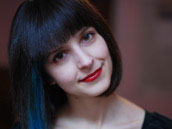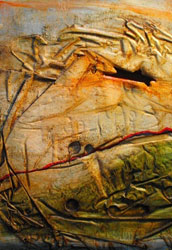Fiction Review
Julie Leroux
The Children’s Book
by A.S. Byatt
Toronto, ON: Knopf, 2009
624 pp. $36.95
At a time when even big, chunky books can be disappointingly quick reads that leave the reader right where he started, it’s quite nice to find a novel that forces you to slow down and savour every word. A.S. Byatt’s new novel, The Children’s Book, does just that. Beyond its intricate and intriguing cover of a deep blue hue lies the fulfillment of the story it promises: a text that is striking by its richness, its detail and its blend of imagination and intellectualism.
The Children’s Book is not a book for children; it is a book about children living and growing up in the late 1800’s and early 1900’s, as far as the end of the First World War. Specifically, it is about the historical, political, cultural and social contexts that shape their lives, their thoughts, and their decisions.
The story begins by introducing a few interesting key characters. Olive Wellwood, a writer of children’s books, visits her friend Prosper Cain, Special Keeper of Precious Metals at the South Kensington Museum. Meanwhile, Olive’s son Tom catches up with Prosper’s son Julian, who claims to have seen a mysterious boy about the museum. Searching the place, they find Philip Warren, a young potter, who lives in hiding in the basement and who observes the museum’s collections in the hopes of finding inspiration for his creations. Just when the reader has the impression that he knows whose stories he will be following, the amount of characters and biographical elements to member explodes in the subsequent pages –the Wellwood family alone is itself quite large. To amplify this impression, a complex story filled with mystery and secrets revolves around each character. Some reviewers believe that this brings a potential flaw to the novel, and argue that the strong emphasis on multiple characters leaves no room for the plot. While this conclusion remains debatable, descriptions of characters and the relation between them do take precedence over the amount of elements present in the plot. The Children’s Book focuses less on action than on reflections on identity and what constitutes –or doesn’t constitute—it: class, social circles, family ties, friendship, gender, sexuality, marriage, philosophical values, education, etc. Those readers who have a tendency to prefer psychology over narrative may find satisfaction with Byatt’s writing – provided that they are good at remembering names.
Art and creation also occupy an important, if not fundamental, place in Byatt’s new novel. Many principal characters in the book are also artists: aside from writer Olive, and Philipp, who becomes a potter’s apprentice, we are introduced to Anselm Stern, a German puppeteer, and Benedict Fludd, an eccentric and moody potter. Along the pages of The Children’s Book, the reader will be invited to reflect upon the place of the artist in society, as well as on the impact of art on those who practice a creative trade. Byatt shares with us much of the creative process of Olive’s writing, sometimes even sharing passages of the fantasy tales she writes for each of her own children. These excerpts are certainly interesting to read and may inspire the reader to think about fiction as a necessary part of –or necessary companion to—reality. If the former always remains a distorted mirror of the latter, it is nonetheless a mirror everyone needs to look through.
The Children’s Book will probably not please every reader: it is a slow read and it requires some degree of curiosity about the socio-cultural context of the pre-war era. Those who are fascinated with questions of human psychology and identity, and who have an interest in late Victorian and Edwardian art and culture should definitely take a look at Byatt’s novel. Its 600 pages of intrigues, secrets and passions will transport the book holder into another world and time.



